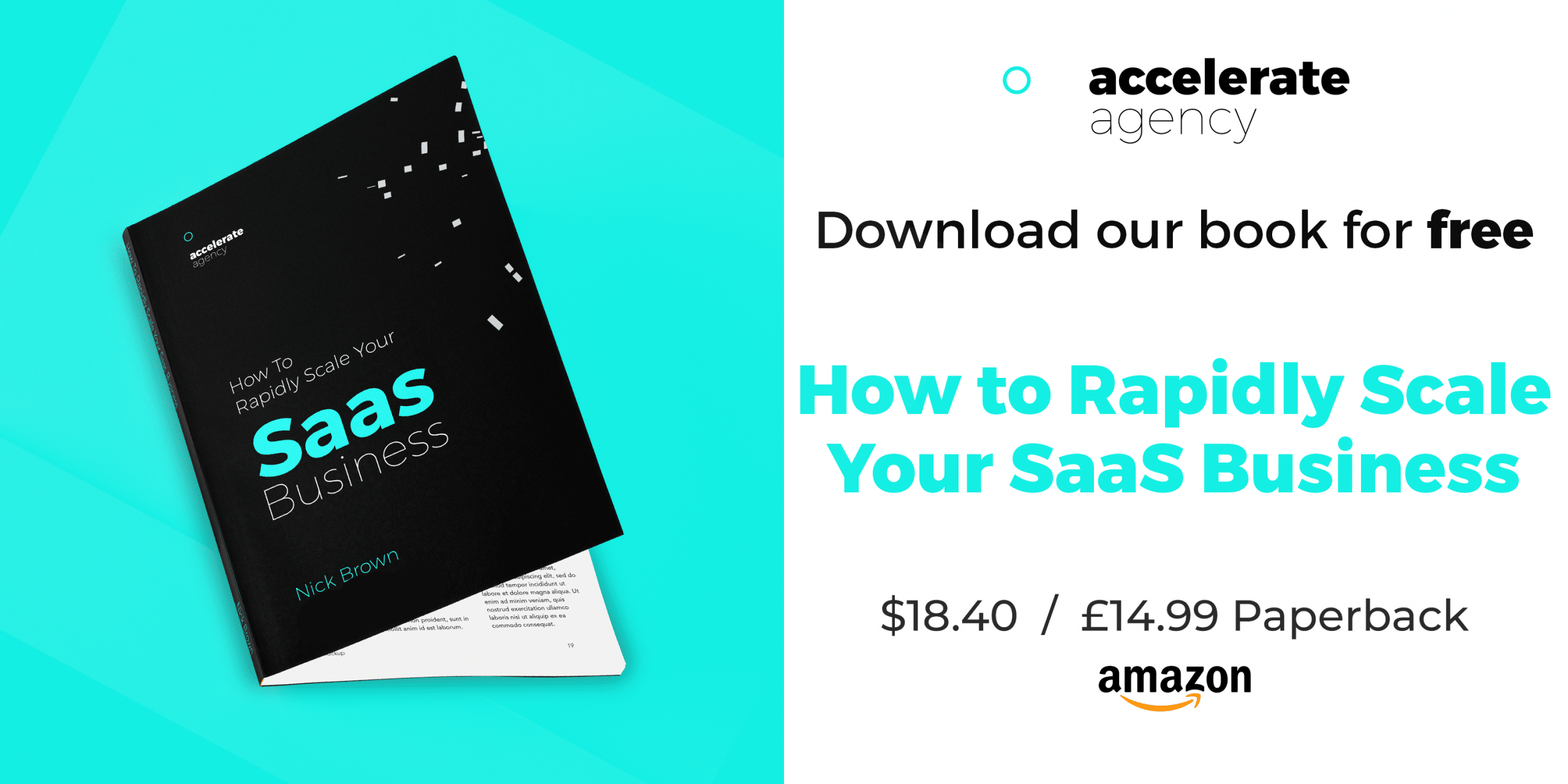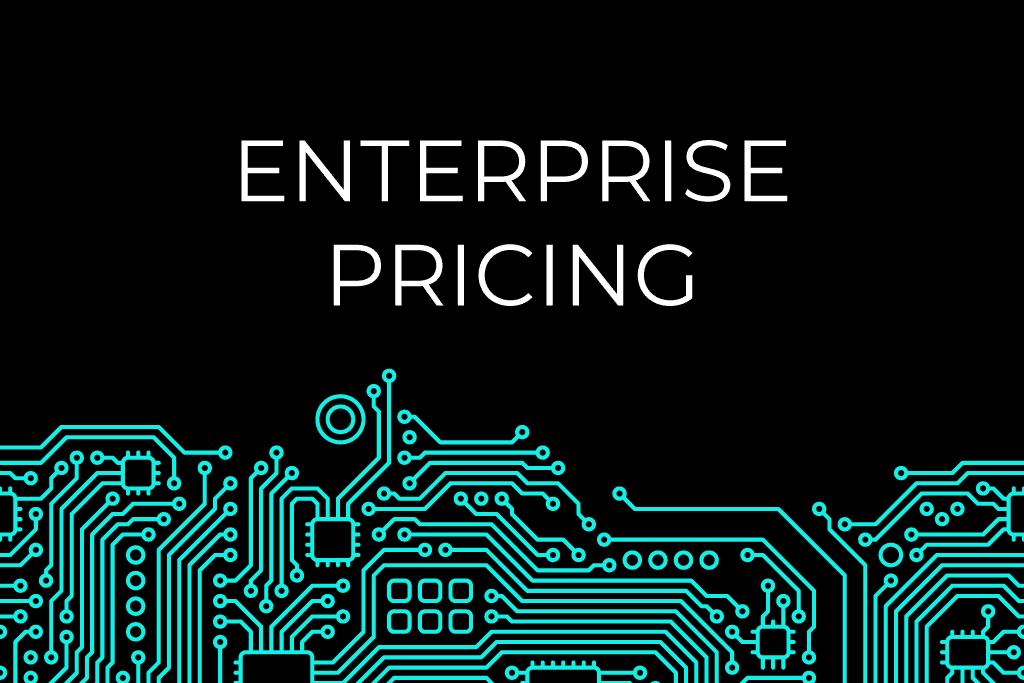SaaS Sales Incentive Plans: A Step-by-Step Guide & Best Practices
The Software as a Service (SaaS) market is a vibrant and growing sector. In 2021, it is expected to reach a value of $145.5 billion. SaaS provides a monthly subscription model where you pay for software that’s hosted elsewhere.
These models offer major advantages to clients as they no longer have to buy products that may outlive their usefulness quickly and also avoid having to make one-off major payments. SaaS products also tend to offer better levels of support.
For the SaaS companies themselves, they gain the advantage of sales cycles that provide regular recurring revenue streams. They will also usually host the software solution in the cloud and can ensure both future developments as well as enterprise-level security.
The sales process and the people involved in it are crucial to SaaS businesses. So, how do you align your primary business objectives with that process? How do you build a sales incentive plan that keeps all stakeholders happy and, as a SaaS provider, what sort of sales compensation and incentives should you offer?
To find relevant sections quickly, please use the menu below:
The ultimate goal: Align sales behaviors and business objectives
Top elements that affect incentive plans
Most common SaaS compensation models
What is the average commission for SaaS sales?
How to create a SaaS sales incentive plan
Best practices in SaaS sales incentive planning
The ultimate goal: Align sales behaviors and business objectives
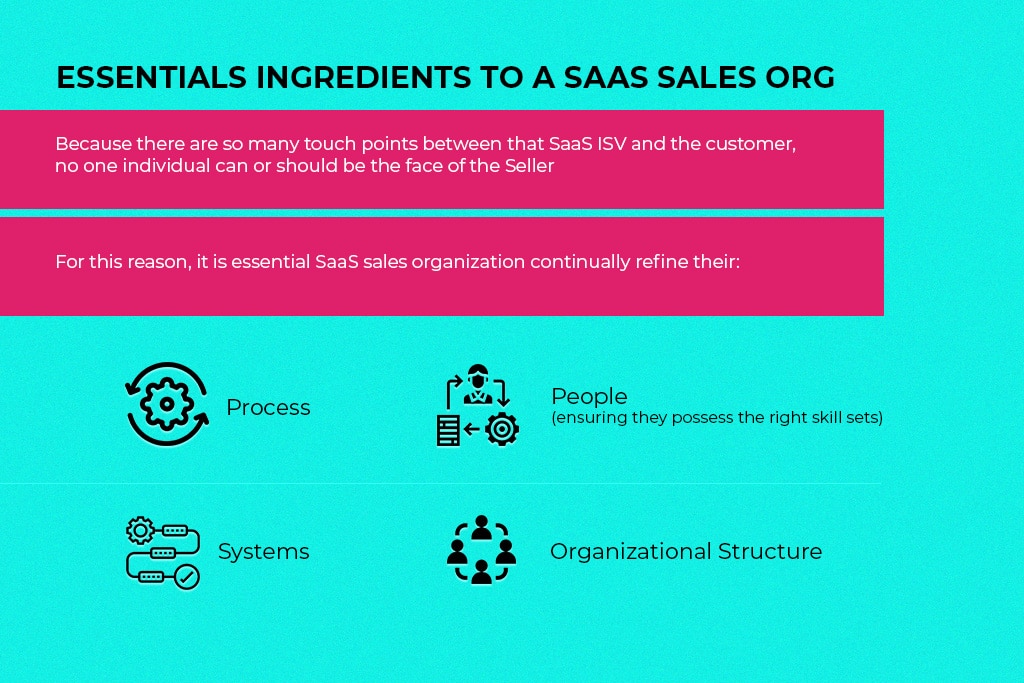
Any business goals and strategy that you have decided upon have a close, almost symbiotic relationship with how your sales team performs. If your C-suite has decided on X% business growth or $Y million in sales in the coming financial year, then it is your sales (and marketing) teams that you rely on to deliver those strategic targets.
There can often be gaps between how your sales teams operate and what your objectives actually are. Your sales professionals should be viewed as a major organizational asset, so you should be looking at how to best utilize them in order to both meet targets and to keep those teams happy.
There are two elements to consider carefully when it comes to any approach:
1. Strategy
- Identify your primary and secondary target demographics.
- Identify the main ways of reaching those targets.
- Segment your different types of customers based on value/profitability while not neglecting customer service standards.
- Take your overall corporate strategy and turn it into realistic and achievable sales strategies, systems, processes, and tasks
2. Sales teams
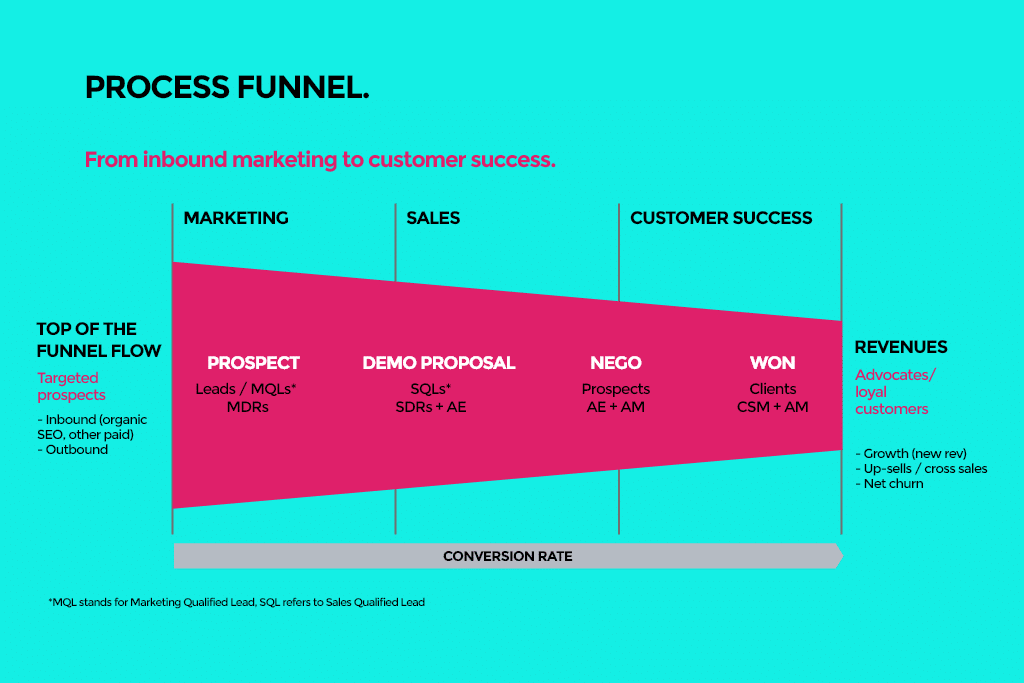
- Develop, train, nurture, and mentor the best possible sales team and tailor how they approach both your products and any customer segments.
- Ensure sales staff and activities are aware of and correspond with your company goals.
- Have attractive recruitment and compensation schemes that will attract the best staff.
- Where you have multiple sales activities or groups, ensure there is sufficient coordination and efficient management.
- Be prepared to be flexible and ready to adjust your strategies and activities if and when needed.
- Have your sales teams (and your organization) build and expand appropriate professional and personal networks.
- Provide your sales team with access and use of a CRM so that they can manage their pipelines and subsequently provide more intelligence to management on their activity and success rate.
Top elements that affect incentive plans
Salespeople are not in their profession for fun. They’re in it for the financial compensation they will receive when they perform well. That means you need to consider various elements when constructing an incentive plan.
1. New sales
New sales help drive growth or profit and can be especially important to SaaS companies as they represent ongoing revenue rather than a one-off payment.
You should offer attractive compensation for gaining a new sale, either as a standardized payment or linked to the projected lifetime value of that new customer.
2. Gross margin
You may also consider payments based on the gross margin of your products. So, if a salesperson sells a product that produces a $10,000 gross margin, they would receive more compensation than when selling a product that produces a $5,000 margin. The two advantages of this option are that it discourages discounting and encourages promotion of higher value products.
3. Choosing between rewards and penalties
Also known as accelerators and decelerators, this option can reward a salesperson for exceeding their targets for a specific period of time, or penalize them for periods where they underperform.
This is usually by reducing the commission they receive. Another potential penalty is a clawback clause, where a salesperson has to repay any received payments if unhappy customers cancel their subscription within a short period of signing up.
4. Upsells and cross-sells
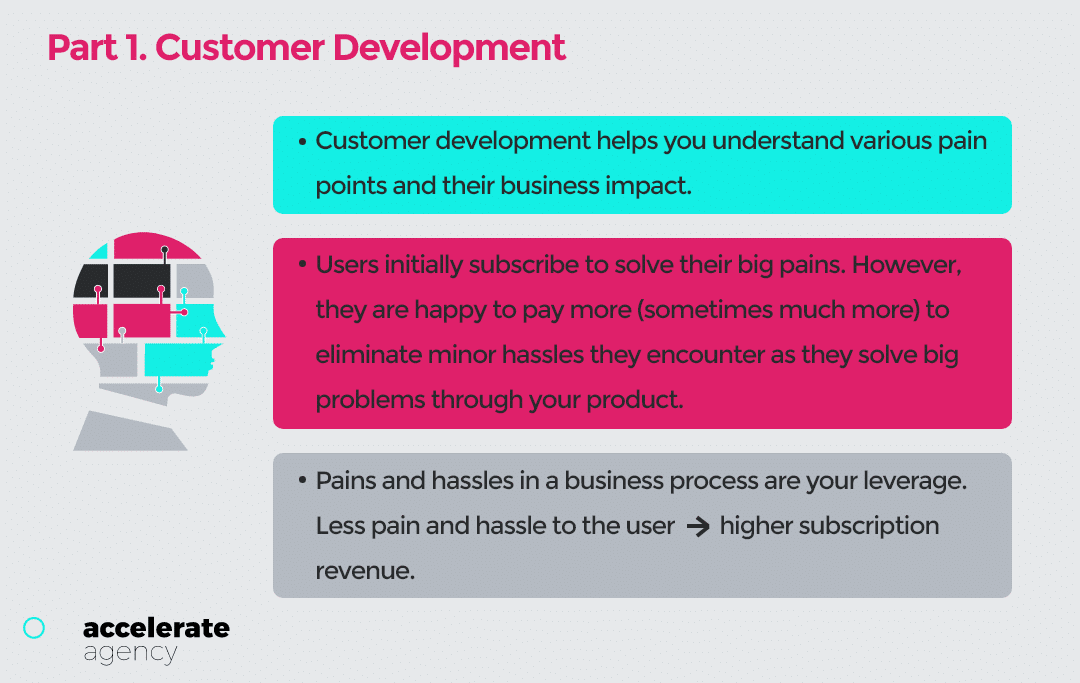
Many of your products may come in several levels (standard, premium, and so on) and you may also sell associated products that work well together.
When a salesperson persuades current customers to upgrade their product, or to also buy a linked product, you should recognize those efforts with a clear upsell and cross-sell commission policy.
5. Renewals
Customers who do not renew their SaaS subscription bolster your churn rates. Medium-sized SaaS companies lose between 5% and 7% revenue to churn rate each year.
Acquiring new customers is always more expensive than retaining existing ones. For that reason, having salespeople who build good relationships with customers encouraging them to renew contracts, should be awarded appropriate compensation.
6. Median commission rates
Establishing median compensation rates can clarify both what’s expected of your sales teams and what they can expect to earn. For example, you may structure your median rate as being 10% of annual contract value (ACV). You can then add to that base rate for actual contract renewals as well as for expansion (upsell or cross-sell) of any long-term contracts.
7. Bonuses
If your sales teams usually hit targets, you may choose to offer a basic salary + bonuses package. This is advantageous in that it makes it easier for you to budget for compensation to your sales teams, but still instils motivation to make more sales.
You may offer a basic salary of $40,000 and then an added bonus of $10,000 for exceeding targets by a certain amount.
8. Non-cash incentives
Sales is always a competitive profession and it’s not always about the cash incentives. By offering different rewards, you can encourage that competition, which in turn can boost your revenue.
For example, you may offer non-cash incentives (in addition to the usual commission rates) on a new campaign. These can include things such as paid time off, extra training, vouchers (for restaurants or hotels, for example), and more.
Most common SaaS compensation models
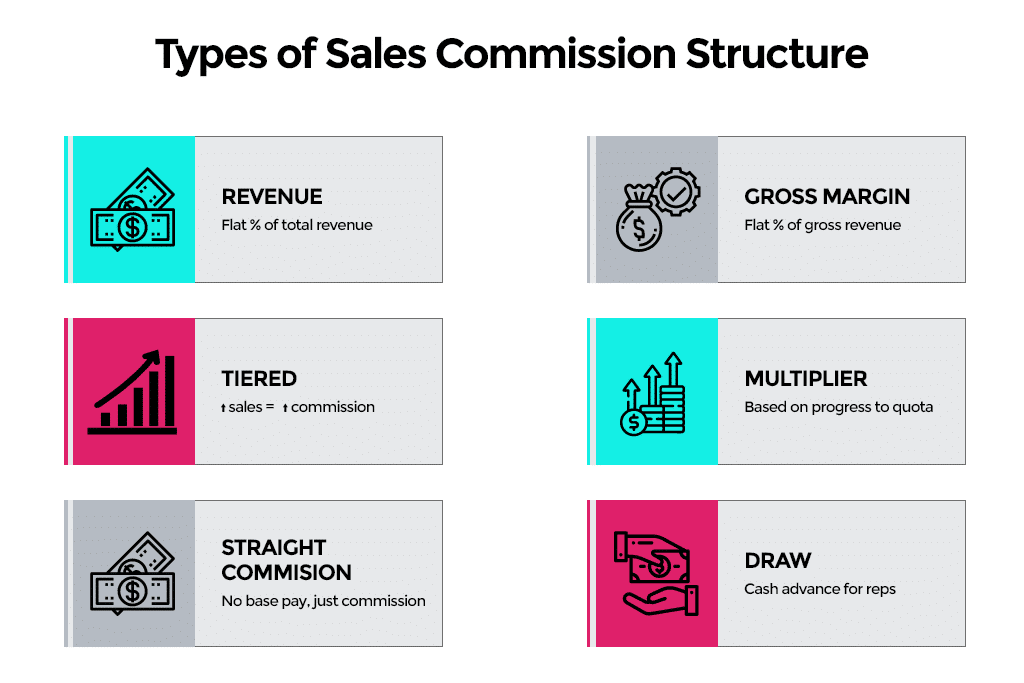
1. Commission-only
A commission-only approach comes with both advantages and disadvantages.
From the perspective of you as the employer, you’re only paying when your sales reps deliver revenue. This can be especially good for startups or early-stage companies as it helps you stay within budget. It also means you don’t pay taxes for these employees or offer them benefits as they’re on flexible employment contracts.
For sales teams, it allows them more flexibility and independence, but their rewards will be commensurate with their efforts. The main disadvantage is finding competent sales reps who are willing to work on this basis as they’re not guaranteed any income. They may also cut corners to ensure sales (and commission) and you’ll have to offer a fairly high commission per sale.
2. Base salary and commission
The good thing about this model is that your reps know they have a guaranteed income every month, though that base salary may be small. This gives them some security while still motivating them to close sales in order to boost that existing income. Having a set amount of base salaries will also help you with budgeting.
If you want more experienced sales reps, you need to consider your budget and, if you offer higher base rates, you need to lower commission rates.
3. Profit-based commission
Here, commission is determined by the overall profitability of the company. It encourages your staff to avoid discounting and to focus on your higher value products. When commission is based on your net revenue and your profits, the reps will want to help maximize revenue as much as possible.
This isn’t a model for every organization. Where it can work is if you have low operational costs and high value products, where average deal size is five or even six figures.
4. Tiered commission
This is a popular model with many businesses. For it to work, you set an initial quota for your salespeople to reach with a basic rate of commission of all sales up to that level. If they exceed the quota, you offer higher commission rates, bonuses, or other incentives. This motivates them to reach and exceed any quota each month, quarter, or year.
The good thing about this model is that you will quickly see who your best performers are. It also increases competitiveness, though, you should be strict on things like available discounts. The primary issue with this approach is that you need to be cautious in setting up the tiered commission rates so that they motivate staff without damaging your margins.
5. Residual commissions
This model is often used by providers who offer a subscription-based service. Your sales reps earn commission when there is no churn (usually this has a time limit) and when customers renew any subscription (either monthly or annually).
The big advantage of this model in saas sales incentive plans is that it encourages your teams to build solid and lasting relationships with customers and to provide exemplary customer service.
However, this model should be approached with caution. If your sales team is not dealing with the actual customer retention or renewal process, then why should you pay them when other teams (customer service or marketing) are doing that work?
If you do want to use residual commission, then involve the relevant sales rep in the subscription renewal process.
What is the average commission for SaaS Sales incentive plans?
The average base salary for a SaaS sales executive is around $78,898. However, most sales reps would be aiming for a higher on-target salary once commission is added.
That commission is going to vary depending on the compensation model your organization adopts, but looking at the SaaS industry as a whole, an average commission rate would be about 10%.
How to create a SaaS sales incentive plan
It’s important that you construct a realistic incentive plan that takes into account your own business models, your sales and revenue expectations, and your ability for growth.
1. Determine and set On-Target Earnings (OTE)

In order to both recruit sales reps and to work out a compensation structure, you need to decide what their OTE (on-target earnings will be).
This will be directly related to what your expectations are for revenue and sales. OTE will vary according to location and the products you offer. OTE usually follows the base salary and commission model, but also applies to the other models discussed.
2. Decide on compensation model/s
You also need to decide what model you will use in your organization. It’s worth noting that you can adopt more than one model for different staff roles and that you can change between them as you move forward.
High performers may expect a model such as tiered commission, but may also expect residual commission added to their package. Juniors and trainees may be on commission only or basic + commission.
3. Set rates for pre-sales, sales reps, and sales managers
A consistently high performer is going to expect better rates of remuneration than a trainee just beginning their career path. You’re also more likely to assign high value and long term clients to reps and sales managers with more experience. Define the roles within your company and set rates accordingly.
4. Optimize the incentive release process
If your sales reps are putting a lot of effort, and possibly miles, into closing sales, then the last thing they want is to wait for any rewards.
While you may include things such as bonuses and even some non-cash incentives as an annual feature, the majority of incentives should be released regularly, ideally on a monthly or quarterly basis.
5. Factor in planning for scalability
Every business wants to grow, and, just as you would look at scalability for other areas of your company, you have to consider it for your incentive plan.
Your plan has to align with your business objectives when it comes to scalability of sales. That may mean using more than one sales comp plan model, setting different rates, or allowing for the movement of staff to different rates and models.
6. Regularly review the plan
Are your incentives too high or too low? Is the compensation model you offer attracting (and retaining) high performing staff? Regular reviews mean you can monitor metrics and KPIs to see that your plan works for both you and your sales staff.
Best practices in SaaS Sales incentive plans
1. Quotas should be 5x your OTE
When working out OTE and assigned quotas, a rough guide would be to use a baseline of a sales rep’s quota being 5 x their OTE. So, for example, if their OTE is $100,000 (a combination of base + commission), then their quota would be $500,000.
2. Plan to pay all contributors to sales
Depending on how your business workflows are set up, there may be more than one person involved in the sales funnel. You may have someone like a BDR (Business Development Representative) who sets up and nurtures SQLs (Sales Qualified Leads) for the sales rep to follow up on to deliver a closed deal. Ensure that all contributors to your funnel are recognized.
3. Have dedicated territories or segments for your reps
Breaking down customers, and potential customers, by territory or segment allows you to play to your sales teams’ strengths and is good to have as part of saas sales incentive plans.
In some cases, this may be geographical to tie in with a rep’s location, but you can also segment by potential, customer type, and likely value of the client (you would likely assign your best salespeople to the higher value customers).
4. Include incentives in your CAC
To accurately calculate the value and CLV of every customer, you must also accurately calculate their CAC (customer acquisition cost).
That means you have to include every cent spent to bring that customer onboard with you. That will cover everything from your marketing spend to your lead nurturing and the final sales process itself.
5. Implement accelerators
When you have star performers who regularly exceed their quota and close deals, then you don’t want to lose them. Having accelerators to recognize high performers goes a long way to retaining those employees. Offer extra commission for when they exceed quotas, possibly in a tiered format.
Conclusion
Awareness of the various stages of the SaaS marketing funnel can help you understand the sales process and implement a good incentive plan.
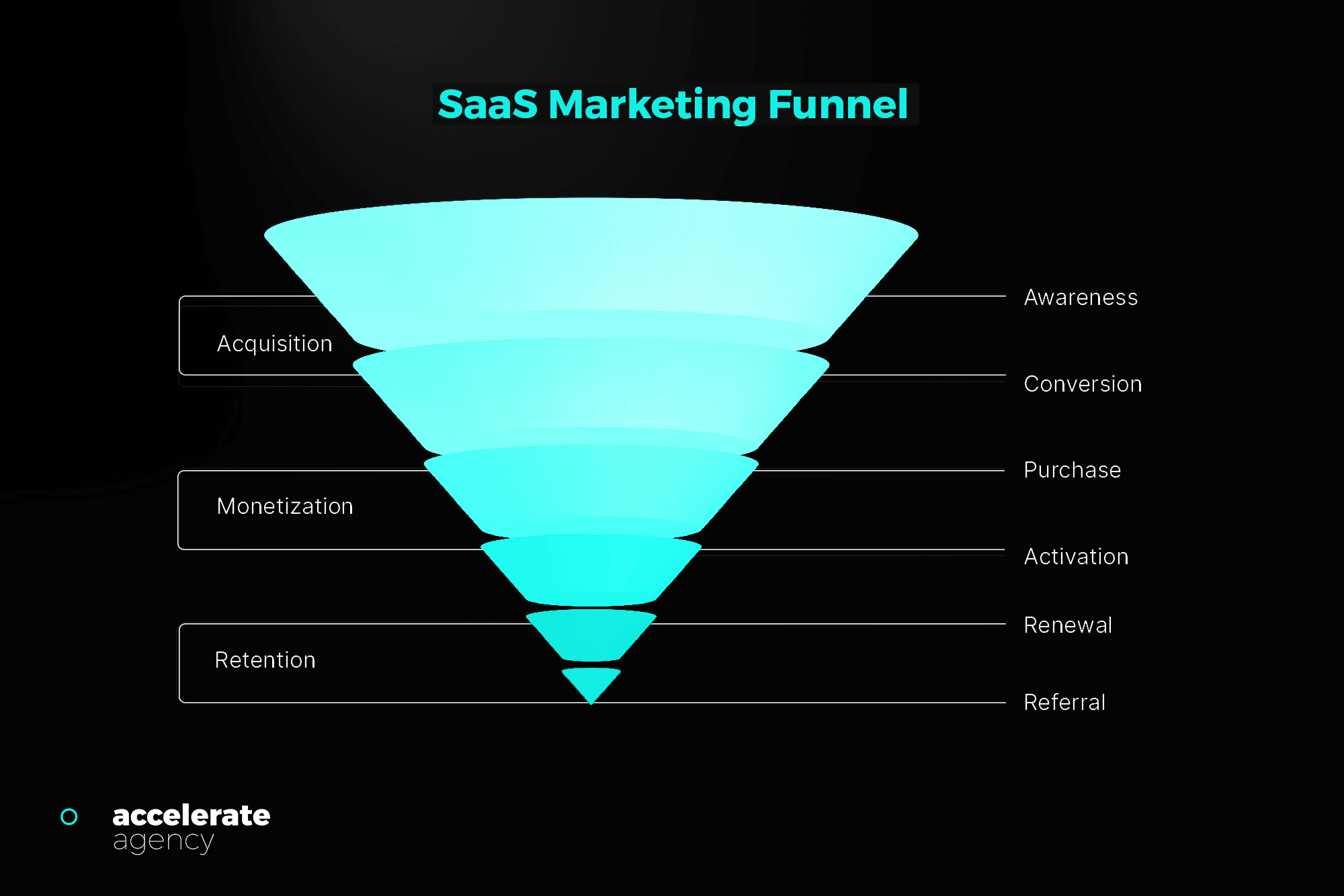
Your business will have specific revenue goals and targets. Establishing profitability allows you to grow and target expansion revenue. To do any of this, you need competent sales professionals who can regularly close high value clients and help retain them long term.
If you don’t offer attractive incentive plans, then you will neither attract nor retain the best salespeople. Signing up for good SaaS marketing is one half of your strategy, the other is to have an efficient sales team who close deals for you.
If you are enjoying this post why not book a consultation with accelerate agency to see how we can help skyrocket your SaaS business
